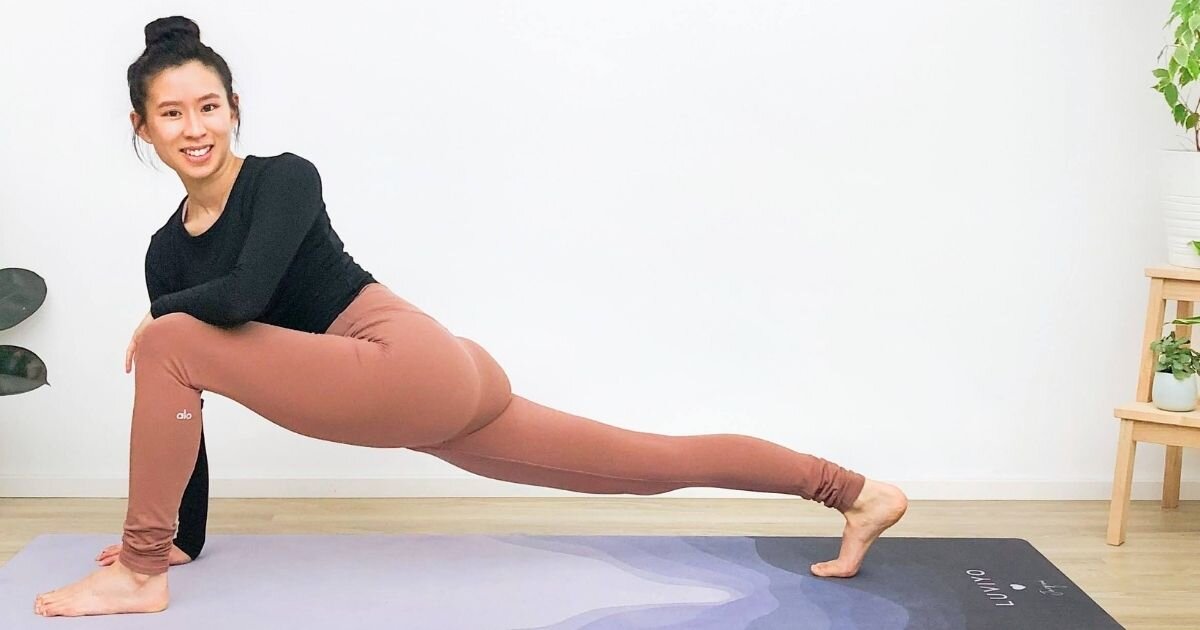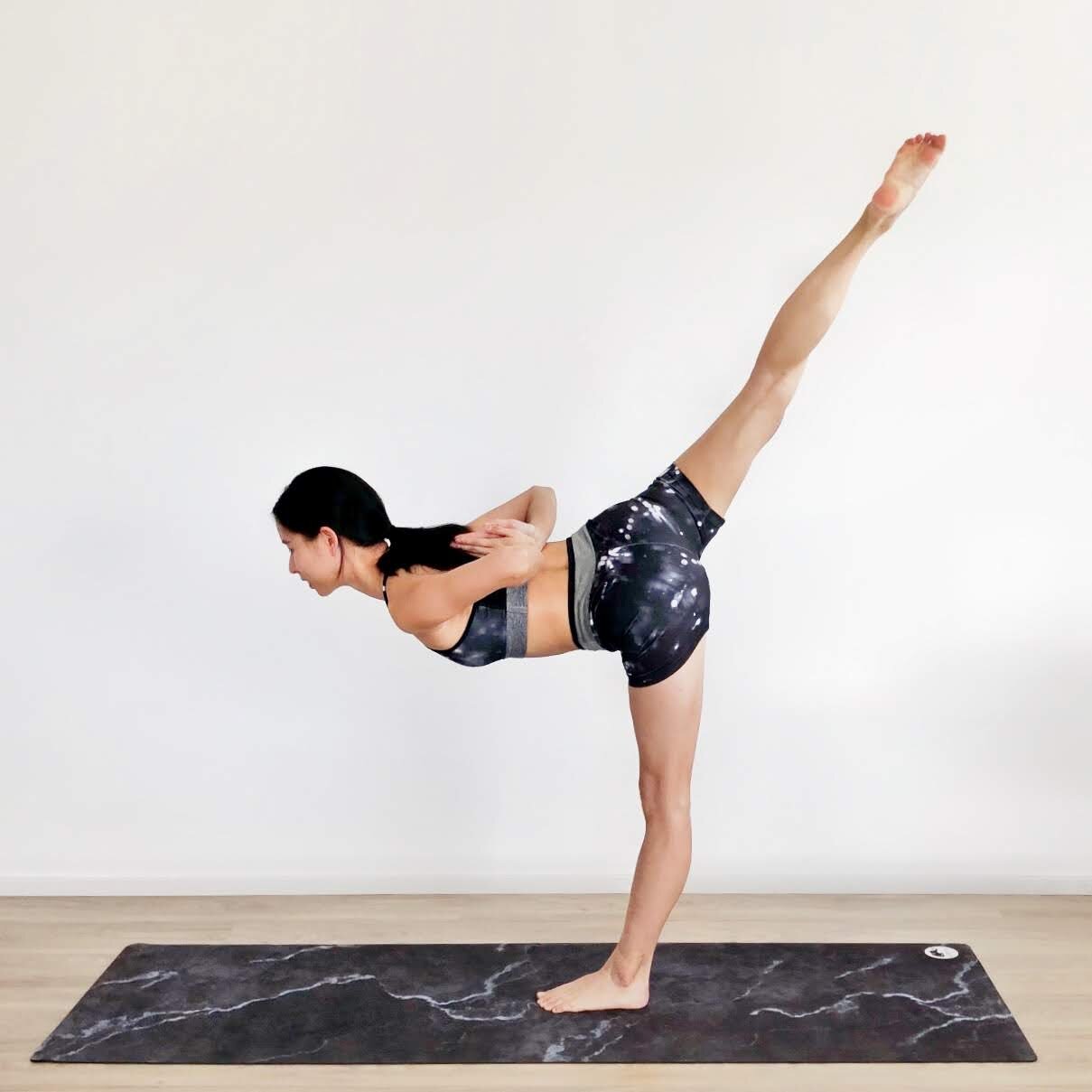How to Start a Home Yoga Practice
Here's how to establish a yoga practice at home by yourself, even if you are a beginner, and reap the physical, mental and emotional benefits that yoga brings.
Werbung. This blog post contains some affiliate links. I may earn a commission if you purchase anything using my code.
There are many benefits to starting a yoga practice at home. Not only do you save time on the commute, but these days you can literally finish work and take just a few steps to be on your mat. You can practice at any time of the day, and you have so many great teachers at your fingertips - both in live and on demand. You could even practice in your PJ's. No-one is around to judge!
But the best part about starting a home yoga practice is that you learn to listen and tune in with your own body. It encourages you to ask yourself how you're feeling on any given day, and adapt your practice to suit your physical, mental and emotional state.
Jump to:
What equipment do I need?
The space
Live vs on demand vs own practice
Starting yoga at home as a beginner
How to stay motivated to practice yoga regularly
WHAT EQUIPMENT DO I NEED?
The good news is, you don't need much to get started with yoga at home. But a yoga mat and some props can definitely make it more comfortable. If you don't want to invest much money yet, you can practice on a towel or a cotton mat. That's what the yogis practised on traditionally. If you do want to invest in a yoga mat, you have so many choices nowadays - from grippy mats, to mats with microfibre tops in beautiful designs. Yoga props can also cost a fair bit, but there are plenty of items around your house that can be used instead - big books in place of blocks, cushions and pillows instead of bolsters.
My favourite mats to use are from Luviyo. Get a 15% discount with my code luviyoxjacqui15.
THE SPACE
Ideally you can find a quiet spot in your home to practice yoga. Make sure you have enough space to spread out around your mat without bumping into any furniture. You can also decorate the area with a few candles, incense, and pictures to make it feel really calm and to inspire your practice. But try to declutter as much as possible. A clutter-free space also helps to keep your mind clutter-free.
LIVE VS ON DEMAND VS OWN PRACTICE
Consider if you want to take live classes, follow a pre-recorded video, or just go with your own flow. All are great options, but the experience is very different. You could also combine these options together for a well-rounded practice.
LIVE YOGA CLASSES
In a live yoga class, a teacher is on the other side with you in real time and (provided you have your camera turned on), can offer encouragement and alignment cues specific to you. It can be extremely helpful to have your posture corrected or certain minor adjustments pointed out to you that you didn't realise you were doing. The energy of practising with other people and having a teacher there with you can be something that really keeps you going and coming back for more. It also holds you more accountable knowing the class is at a specific time and that someone is waiting for you on the other side.
ON DEMAND VIDEOS
On demand videos, like on YouTube, are great if you are constrained by time or want to choose what the focus of the class will be. Plus, a major bonus is that it's free! Some of the biggest teachers on YouTube that you might like to try out:
I also upload a free yoga class every week to my YouTube channel.
You could also consider paid subscriptions to yoga platforms such as Alo Moves or Yoga International. These platforms generally have more bells and whistles to them, like options to have music playing in the background, recommendations of programs to follow, and superb video and audio quality.
OWN PRACTICE
For both live and on demand classes, you don't have to think about what poses to do, which can be a nice break for the brain. On the flip side, if you create your own practice, you have the unique opportunity to practice any poses or sequences that you feel like that day. If you're feeling energised, a dynamic, fast-paced sequence could help you channel that energy. And if you're feeling tired, you could practice something slower like Yin Yoga. Take the opportunity to try out as many different styles of yoga as you can. This way you will have a toolbox ready that you can pick from to build into your own practice. And if you need help with how to structure your practice, a typical yoga class could follow the below:
Breath and meditation - arrive on your mat
Gentle stretches - Side Bends, Cat and Cow, Downward Facing Dog
Sun Salutations - to warm up
Standing poses - Warriors, Triangles, Lunges
Seated/Prone/Supine poses - Forward Folds, Backbends, Twists
Savasana - don't skip this!
STARTING YOGA AT HOME AS A BEGINNER
If you're new to yoga, or still at the beginning of your journey, a big part of your practice will be learning to do the poses with proper form and alignment, so you can experience the full benefits of each pose and not injure yourself. Make sure to look out for videos targeted specifically for beginners, like this one. These generally go at a slower pace and have more explanation of alignment cues to get into the poses. You could also consider taking a few live or private classes with a teacher in order to get adjustments before continuing to practice on your own, or take a short course to learn the basic yoga poses and sequences. My Foundations of Yoga 10-Day Course covers all the foundations for your yoga practice with yoga classes, alignment videos and an e-book to help kickstart your journey.
HOW TO STAY MOTIVATED TO PRACTICE YOGA REGULARLY
Motivation can come in ebbs and flows and it's normal to sometimes be stuck in a dry patch. Here are my top 3 tips to be consistent with your home yoga practice:
Schedule it in - as soon as you write it down in your calendar, you're more likely to commit to it.
Prepare - roll out your mat the night before, set up the clothes you will wear, and select the video you want to practice to or book yourself into a live class.
Set a realistic goal - start small and pick a frequency that actually fits into your lifestyle. The point here is to keep up a consistent practice and not burn yourself out or make a chore of coming to your mat. A yoga practice doesn't have to last any specific length of time - it could be 10 minutes, or 1 hour. This is the perfect chance to listen to what your body needs on a particular day. You might like to start by committing 10-15 minutes a day, or set a specific time to practice on a certain day. If you do fall off the track, it's ok! You're only human. Don't beat yourself up about it. Just pick yourself back up and start again.
Kickstart your yoga journey now and transform your life
Join my 10-day Foundations of Yoga course to build up your basics and discover the transformative power of yoga.



